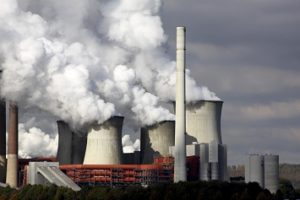President Donald Trump’s bombshell Executive Order (EO) to begin the process of dismantling major actions the Obama administration took to address greenhouse gas (GHG) emissions and promote renewable energy is the clearest indication yet that the president views major federal environmental regulations as a direct threat to the nation’s prosperity, energy independence and security, and jobs creation. The EO directs the EPA to reevaluate the Clean Power Plan (CPP), the Obama EPA’s signature GHG regulation and the action that most demonstrated the United States’ commitment to assume leadership in the global effort to reduce GHG emissions to levels that will mitigate the catastrophic effects of climate change.

Since campaigning for the White House, the president has repeatedly expressed his disdain for the CPP. Further, his selection of Scott Pruitt, who as attorney general of Oklahoma sued to kill the rule, to head the EPA paved an unambiguous path to the likely withdrawal of the CPP and its requirements.
CPP Had Few Options for Coal
The major legal argument against the rule was that it exceeded the EPA’s authority by essentially requiring states to change the way they generated energy. The rule provided states with the flexibility to select from different approaches to reduce GHG emissions from existing power plant, but there was no flexibility about the GHG reduction targets the states needed to meet. Neither did states that depend heavily on coal-fired energy have any options under the CPP other than to force retirement of those facilities or significantly cut back on their generation in favor natural gas generation or renewable sources such as wind and solar.
Litigation Likely to Proceed
The future of the CPP has been under a shadow since the U.S. Supreme Court stayed the CPP in February 2016 pending litigation in the DC Court of Appeals and, likely, the Supreme Court itself. The EPA will no longer defend the rule, but states and organizations that support it will continue to use the courts to pressure the EPA to control GHG emissions from power plants.
“We won’t hesitate to protect those we serve—including by aggressively opposing in court President Trump’s actions that ignore both the law and the critical importance of confronting the very real threat of climate change,” said New York Attorney General Eric T. Schneiderman in response to the EO. Schneiderman is one of a group state attorneys general and chief legal officers of major U.S. cities who are poised to litigate against administration’s actions.
Other Energy Sources
The EO goes beyond the evident intention of withdrawing the CPP. In his remarks, President Trump said the EO will also begin the process of lifting the ban on federal leasing for coal production; lifting restrictions on the production of oil, natural gas, clean coal, and shale energy; and returning regulatory power to the states.
“States and local communities know what is best for them,” said the president.
In announcing the EO, the president continually acknowledged a group of coal miners lined up behind him in the map room of the EPA.
“We will put our miners back to work,” said the president.
President Trump’s EOs are here.
